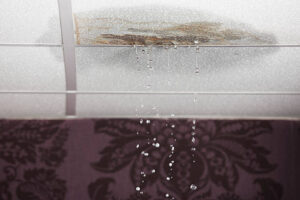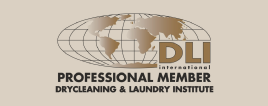
Water damage can ruin clothing and other fabrics, whether from flooding, burst pipes, fire impression, or other mishaps. Bacteria, mold, and mildew, which may not be visible immediately, grow in wet items. This makes it imperative to begin restoration as soon as possible.
Restoration success depends on the kind of water that affected the items and how long ago the damage occurred. Waiting more than 72 hours significantly reduces the likelihood that the items can be restored. If you do not have time to wash soiled clothing right away, or if your laundry room is also affected and cannot be used, take the items to Flair Cleaners. The same holds for dry-clean-only items that have been water-damaged.
Kinds of water damage
In severe flooding, no matter where the water comes from, it has probably come into contact with many other substances present in your home and surrounding areas. For this reason, carefully handling water-damaged items that are still wet is important. Wear gloves or wash your hands with clean water and soap after handling them.
- Clean water: Clean water is water with no contaminants or organic matter. If your clothing was damaged by water from a fire hose, broken water line, clean toilet, sink, bathtub, or rain/snow/ice, it has clean water damage. However, if water that was originally clean has been left standing for more than 48 hours, it may become grey water.
- Grey water: Grey water is water that has biological organisms, contaminating chemicals, dirt, or other organic matter in it. It may have a cloudy appearance and would be unsafe for human consumption. Examples of grey water are used laundry or dish water, toilet water with urine but no sewage, fish tank water, and water from a water bed. Because grey water may have microorganisms and bacteria already in it, it can quickly become black water.
- Black water: Black water is water that is contaminated and unsanitary. It may not always appear “dirty,” so it is essential to know the source of the water. Flooding from sea, river, and lake water is classified as black water because of the presence of microorganisms and unknown chemical pollutants. Sewage water is also black water. Items that have been heavily damaged by black water should probably be discarded, but always check with a dry cleaner to see if they can be restored.
Restoration Tips
- Thoroughly dry water-damaged items outdoors or on a drying rack in a clean room. Putting the items in a dryer will set in unpleasant smells, black mildew spots, and other stains.
- Machine-washable items with mild damage can be washed with laundry detergent and vinegar to help kill germs and neutralize odors.
- Contact a professional water-damage restorer like Flair Cleaners for items that are not machine-washable or are severely damaged.
Removing mold / mildew from machine-washable items
- If garments are still wet, lay them in the sun to dry. Dry heat and light help kill mold. If your item is labeled dry clean-only, take it to Flair Cleaners after it is dry. Let us know if it has been damaged by water.
- If your item is washable, fill washing machine with warm water and regular amount of detergent. Add ½ cup borax and let mildewed garments soak in this solution for up to four hours.
- Run the regular wash cycle.
- If garments still show signs of mildew, do not put them in the dryer. Apply a mixture of lemon juice and salt to mildew spots and dry them in sunlight. Note: this may bleach items, so taking them to Flair may be a better solution.
- Machine wash again.
You trust Flair Cleaners to care for your laundry and dry cleaning needs meticulously. It should be a comfort to know that we are here for you even in the worst circumstances, like water, fire, or smoke damage. Customers have relied on us for restoration of family heirlooms, garments, and household fabrics for more than 60 years.





Hello, all this information was very helpful. Thank you very much! Keep posting such kind of info on your blog. I’m really impressed by it. water damage restoration
I feel terrible for my buddy since yesterday night her basement unexpectedly flooded. I’m hoping he’ll get in touch with a remediator right away to have the repairs done. You brought up a really good point about how the type of water that damaged the objects and the duration of the damage determines how successful the restoration will be. The possibility of the goods being recovered is greatly reduced if one waits more than 72 hours. https://www.anytimerestoration.com/water-damage-mitigation
Nice article. This article provide information about different types of
water damage : clean water, grey water, and black water. It gives helpful tips like drying things outside, getting professional help for big problems, and how to remove mold from clothes in an easy way.
The insights provided in this blog about dealing with water damage restoration are truly invaluable. Having recently faced water damage in my home, I was unsure of where to start and how to mitigate the damage effectively. However, this blog not only offered a clear understanding of the restoration process but also highlighted the importance of acting swiftly to prevent further harm. I found the tips on assessing the extent of the damage and the steps to take immediately after discovering water damage particularly helpful. Additionally, the emphasis on seeking professional help for thorough restoration resonated with me, as it ensures the safety and long-term integrity of the affected areas. Overall, this blog has equipped me with essential knowledge and practical guidance to navigate the challenging process of water damage restoration with confidence.
I especially appreciate the emphasis on safety first – turning off electricity is crucial to avoid potential hazards. Quick water extraction and drying are indeed key to preventing mold growth and further structural damage. Another tip I’d add is to document the damage with photos and notes for insurance claims. This can make the process smoother and help ensure you get the coverage you need. Thanks for sharing these valuable insights!
Water damage can ruin fabrics, and it’s crucial to act quickly to prevent bacteria, mold, and mildew growth. Restoration success depends on the water type and damage duration. Clean water from pipes or rain is less severe, while grey water and black water from sources like sewage or floods pose higher risks. Dry affected items outdoors and wash with detergent and vinegar. For non-washable or severely damaged items, consult professional restorers.